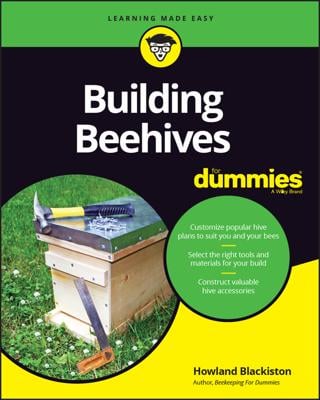Woodenware refers to the various components that collectively result in the beehive. Traditionally these components are made of wood, but some manufacturers offer synthetic versions of these same components (plastic, polystyrene, and so on). The bees accept wood far more readily than synthetic versions. And the smell and feel of wood is ever so much more pleasurable to work with.
Be aware that the hive parts you order will arrive in precut pieces. You will need to spend some time assembling them.
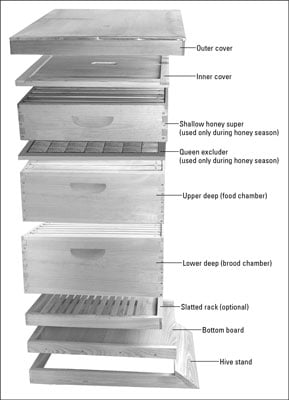
Beehive stand
The entire beehive sits on a hive stand. The best ones are made of cypress, which is highly resistant to rot. The stand is an important component of the hive because it elevates the hive off the ground, improving circulation and minimizing dampness.
The hive stand consists of three rails and a landing board, upon which the bees land when they return home from foraging trips. Nailing on the landing board just right is the only tricky part of hive stand assembly.
Bottom board on the beehive
The bottom board is the thick bottom floor of the beehive. Like the hive stand, the best bottom boards are made of cypress wood. This part’s easy and intuitive to put together.
Some beekeepers will use what’s called a “screened” bottom board in place of the standard bottom board. This improves ventilation and is helpful when monitoring the colony’s population of varroa mites.
Your beehive’s entrance reducer
When you order a bottom board, it comes with a notched wooden cleat. The cleat serves as your entrance reducer, which limits bee access to the hive and controls ventilation and temperature during cooler months.
Beekeepers use the entrance reducer only for newly established hives or during cold weather.
If you can’t find your entrance reducer, use a handful of grass to reduce the hive opening.
Beehive deep-hive body
The deep-hive body contains ten frames of honeycomb. The best quality ones are made of clear pine or cypress and have crisply cut dovetail joints for added strength. You’ll need two deep-hive bodies to stack one on top of the other, like a two-story condo. The bees use the lower deep as the nursery, or brood chamber, to raise thousands of baby bees. The bees use the upper deep as the pantry or food chamber, where they store most of the honey and pollen for their use.
If you live in an area where cold winters just don’t happen, you don’t need more than one deep hive body for your colony.
Queen excluder in your beehive
No matter what style of honey harvest you choose, a queen excluder is a basic piece of equipment you need. It’s placed between the deep food chamber and the shallow (or medium) honey supers, the parts of the hive that are used to collect surplus honey. The queen excluder comes already assembled and consists of a wooden frame holding a grid of metal wire, or a perforated sheet of plastic.
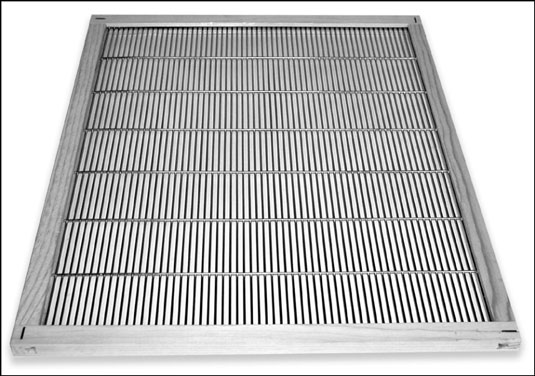
Shallow or medium honey super
Honey supers are used by beekeepers to collect surplus honey. That's your honey — the honey that you can harvest from your bees. The honey that’s in the deep-hive body you need to leave for the bees.
They come in two popular sizes: shallow and medium. Honey supers are put on the hive about eight weeks after you first install your bees. For the second-year beekeeper, honey supers are placed on the hive when the first spring flowers start to bloom.
Frames for your beehive
Each wooden frame contains a single sheet of beeswax foundation. The frame is kind of like a picture frame. It firmly holds the wax and enables you to remove these panels of honeycomb for inspection or honey extraction. Ten deep frames are used in each deep-hive body, and nine shallow frames usually are used in each shallow honey super. Frames are the trickiest pieces of equipment you’ll have to assemble. Beekeeping suppliers usually sell frames in packages of ten, with hardware included.
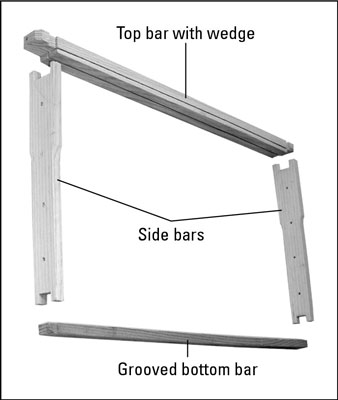
Inner beehive cover
Inner covers of good quality are made entirely of cypress wood. The basic design consists of a framed flat plank with a precut hole in the center of the plank. The inner cover resembles a shallow tray (with a hole in the center). In some models, a notch is cut out of one of the lengths of frame. This is a ventilation notch, and it is positioned to the front of the hive. The inner cover is placed on the hive with the “tray” side facing up.
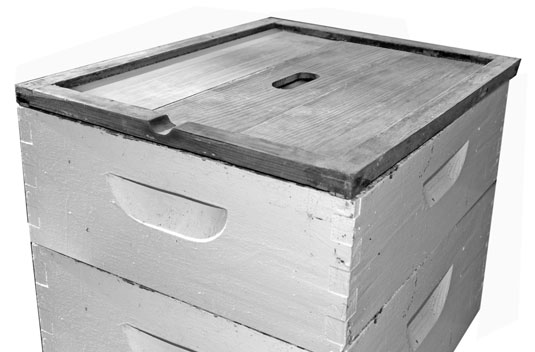
Your beehive’s outer cover
Look for cypress wood when buying an outer cover. Cypress resists rot and lasts the longest. Outer covers assemble in a manner similar to the inner cover: a frame containing flat planks of wood. But the outer cover has a galvanized steel tray that fits on the top, protecting it from the elements. Alternatively, there are some plastic models on the market that will never rot. Not quite as “pretty” as wood, but perhaps practical.

